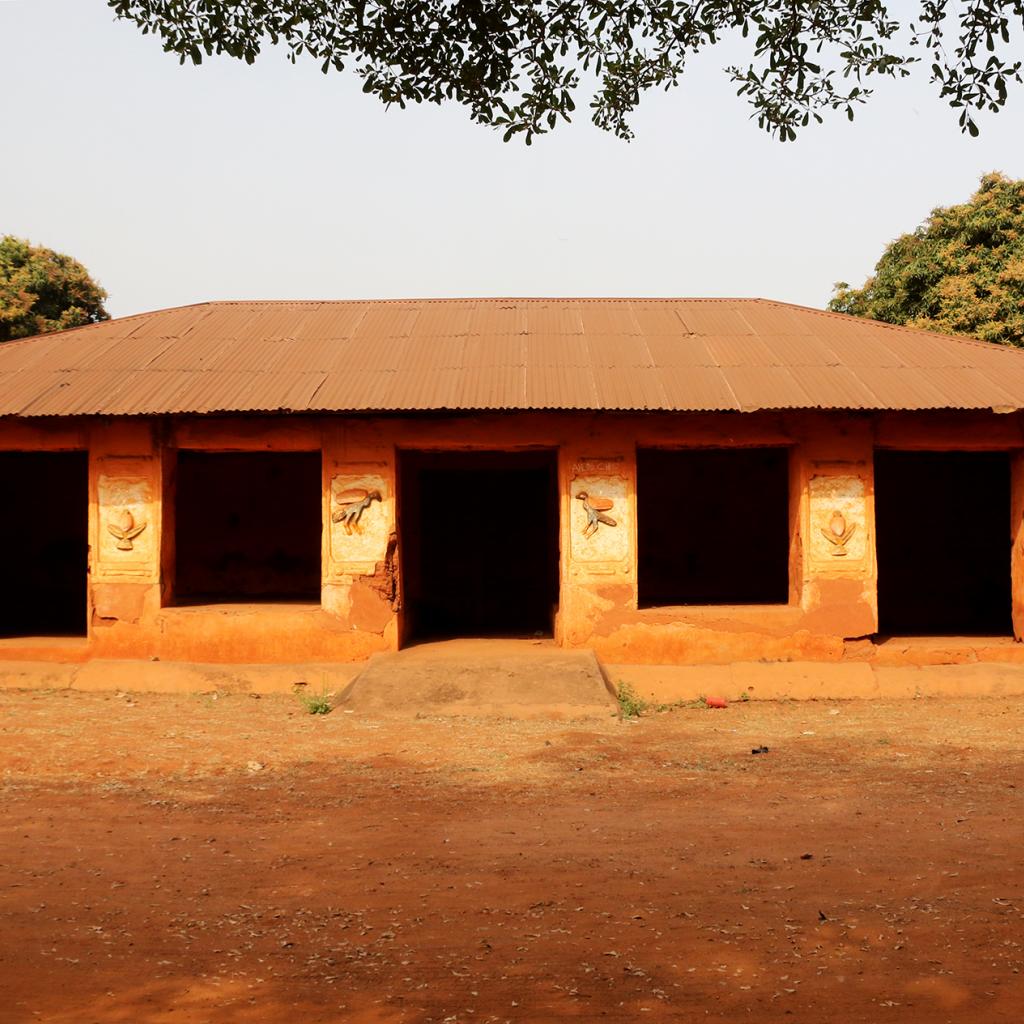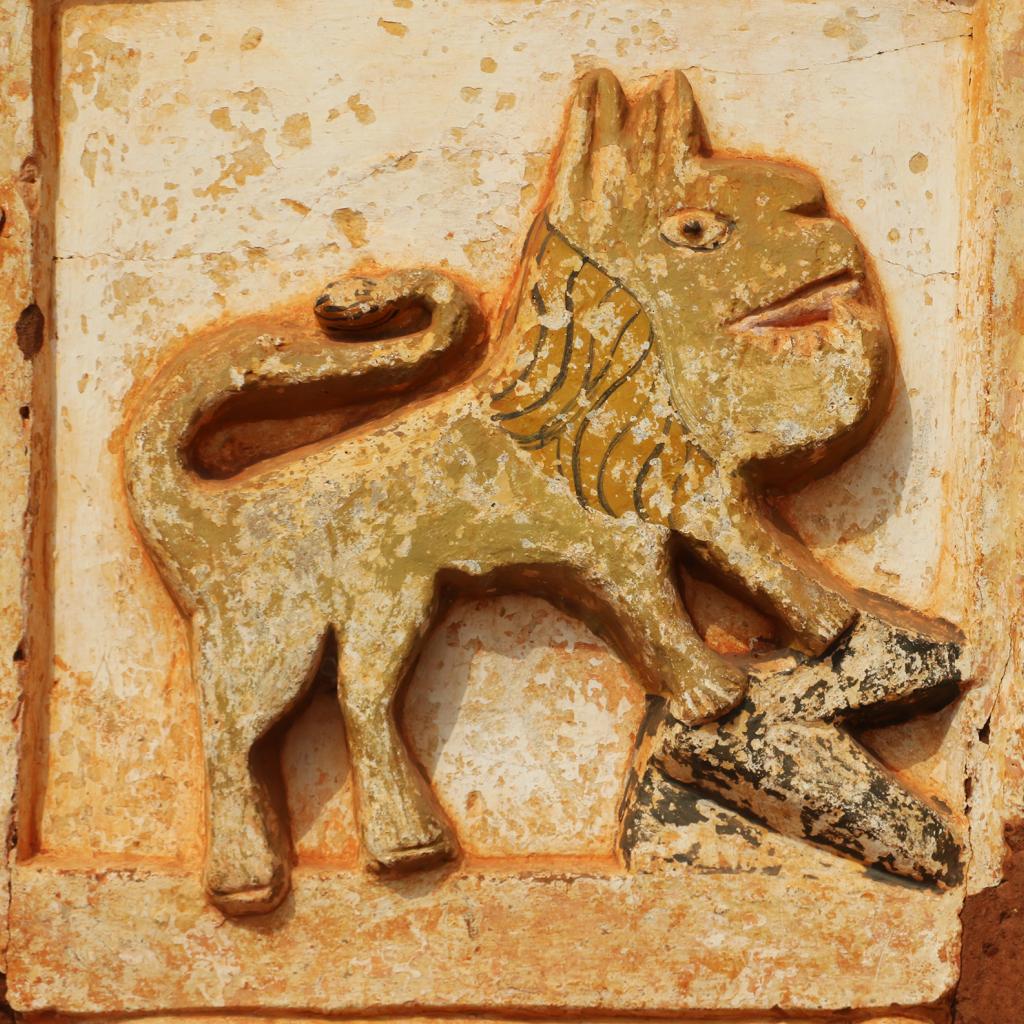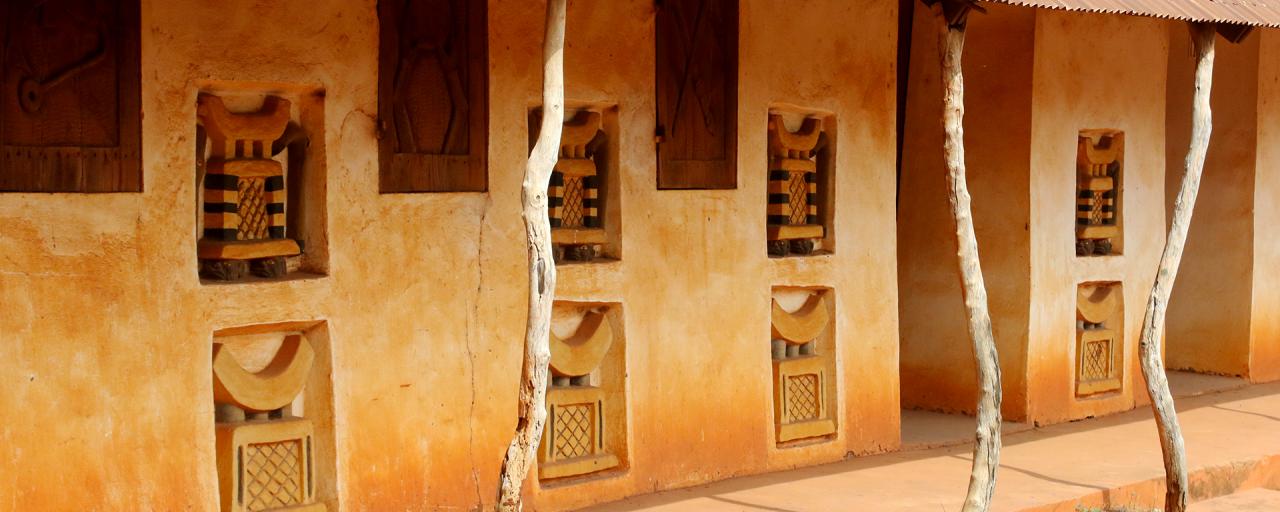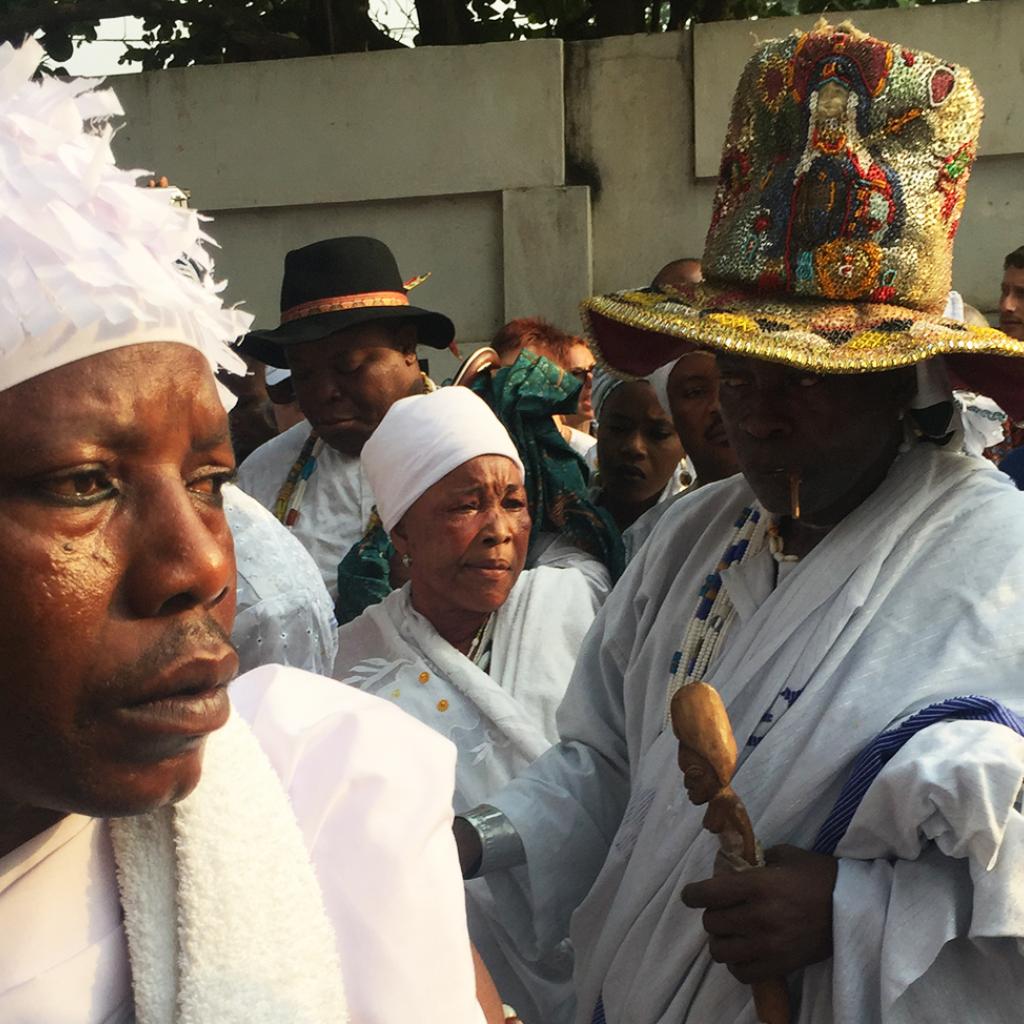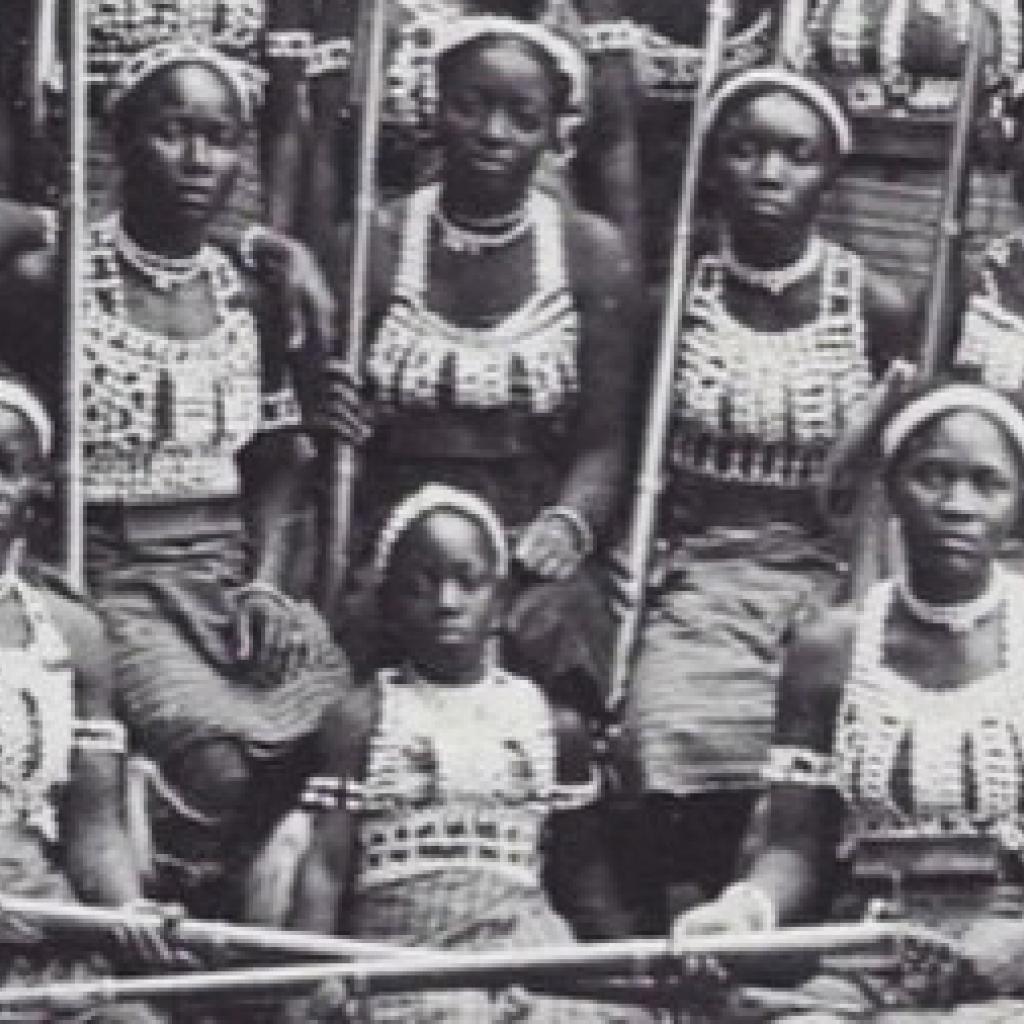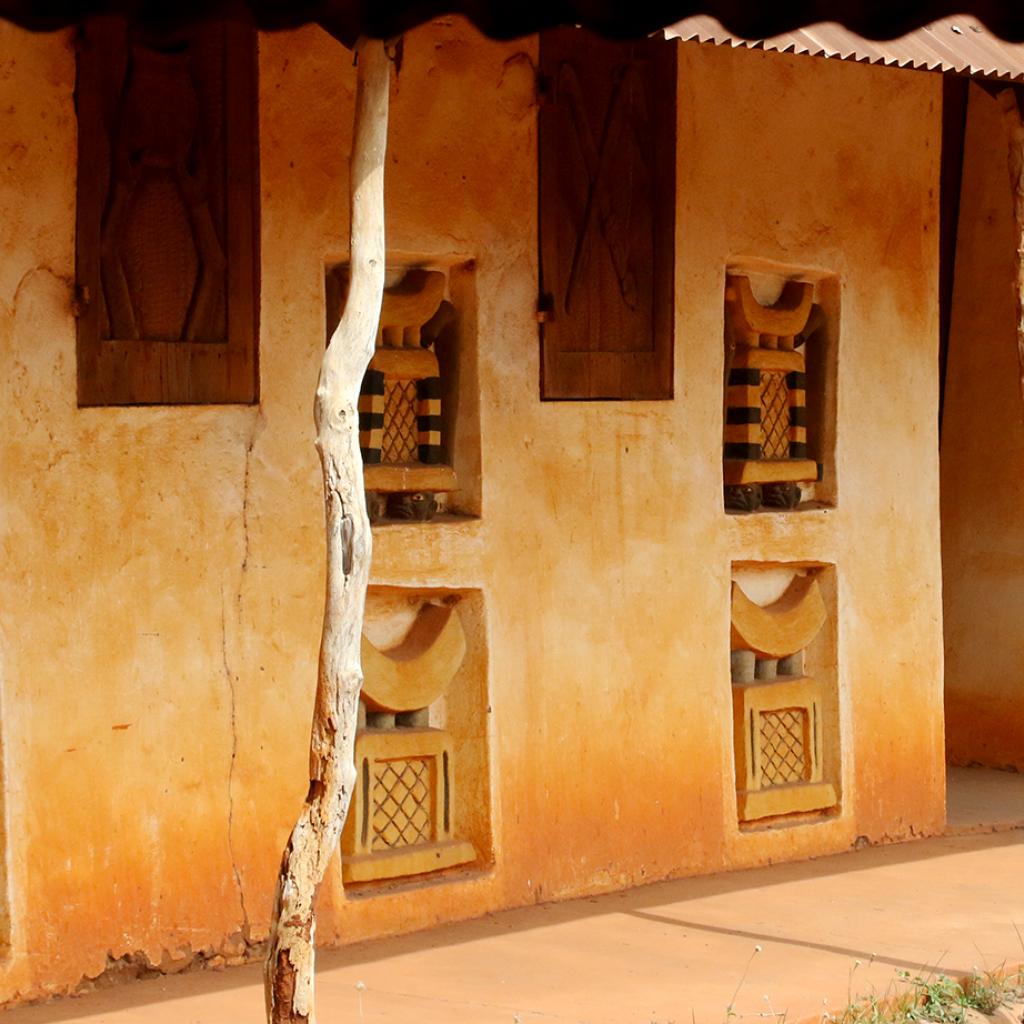Abomey was the capital of the ferocious kingdom of Dahomey of the Fon, today it is a quiet town that retains some buildings belonging to the kingdom, that, for some time, managed to cope with the colonialist armies.
Abomey's Royal Palaces have been declared World Heritage by Unesco in 1985, the buildings are now a museum that witnesses the power of the ancient kingdom and retains, among other things, the mortal remains of the kings, furnishings and accessories of the time and also some temples.
Abomey was founded by the Fon around 1625 and saw its kingdom and its palaces thrive thanks to the wealth coming from the slave market.
The Kings of Dahomey were despotic and bloody sovereigns who gave birth to ceremonies with human sacrifices, embarked on a long series of wars, and were among the principal leaders in the slave trade in West Africa; specifically, by their armaments, they raped men and women from other ethnic groups and exchanged them with Europeans for having weapons, but also Western manufacturing items in return.
The royal citadel was surrounded by a tall perimeter wall, nearly ten kilometers long, and was protected by a not very deep moat, where spiny acacia trees were planted, a natural defensive system but very effective.
Inside the walls were the royal palaces, temples, sacrificial altars, villages for court members, barracks, markets, and squares.
The kings, who followed the rule of the Dahomey's kingdom, wanted to make their contribution to beautifying the city and leaving a sign of their power, each of them building a new palace, that contributed to the expansion of the existing building, and also expanded the City, that came to accommodate up to 10,000 people.
Today, only 2 of the original 12 royal palaces remain, their walls still decorated with bas-reliefs depicting the symbols of the ancient kings of the Kingdom of Dahomey; the other buildings were destroyed after the last king Behanzin, defeated by the French, set the city on fire before fleeing.
Bas-reliefs acted as a historical archive during a period of absence of written documents, featuring important events in the life of the Fon kingdom, such as victorious battles, myths, rituals, and of course the power and grandeur of the rulers.
Inside the palaces there are numerous objects belonging to the ancient kingdom, among which the throne of the kings, where the throne of King Ghézo stands out resting on four enemies’ skulls.
Interesting are also the tapestries that, like the bas-reliefs, were used to document and celebrate the power of the kingdom, show war scenes, and depict scary scenes of decapitated men and a king who uses the amputated leg of an enemy as a weapon.
In one of the two courtyards, there is a temple built of clay mixed with gold dust and human blood, legend says that it was built to appease the spirits of some wives of Ghézo, believed to be unfaithful, who were eaten by the ants after being covered with palm oil.
In some courtyards there are many Dutch, English and Portuguese cannons lined up along the perimeter walls; they were the most appreciated commodity exchanges by the Fon in exchange for the slaves: each was worth 21 girls or 15 men who were being sold to the Westerners as slaves.
Photogallery
